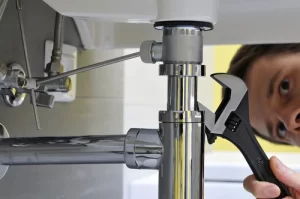
How the Kitchen Chimney Works
The kitchen chimney works by trapping smoke, grease and odors generated during cooking. It does this by combining the functions of a fan, filter and ductwork.
Cooking creates a cloud of microscopic particles, including soot, smoke, water vapor, oil fumes and aromatic fumes. These contaminants can be hazardous to your health and lead to respiratory disorders.
Fan
Kitchen chimneys utilize powerful suction engines and filters to pull away smoke, oil, and greasy particles from your kitchen. This helps keep it cleaner for longer periods of time with less need for deep-cleaning.
When cooking, cooking odors and oils can settle onto surfaces such as cabinets, walls, and false ceilings in your kitchen. These residues can be visually unappealing if your kitchen has tiles or wood furniture.
Exhaust fans are designed to remove smoke and cooking odours from your kitchen, but they do not remove oil or grease particles that settle around your stove top. This leaves surfaces around your stove looking sticky and greasy.
Filter
The filter is an integral component of a kitchen chimney, keeping heavy oil particles out and debris inside. Prior to modern chimney design, many chimneys lacked filters, allowing greasy air into the airstream.
In such a scenario, grease and oil molecules would have built up on the interior walls of the chimney column, decreasing its efficiency.
To prevent this issue from arising, all chimney makers must utilize various types of chimney filters to guarantee that greasy air does not enter the chimney and become trapped inside it.
Filters for chimneys typically consist of multiple layers that trap grease and oil molecules, allowing them to pass through without getting stuck on the surface of the filter. This improves chimney efficiency while cutting energy consumption and maintenance expenses.
Ductwork
Ductwork is a useful method for exhausting kitchen fumes, heat and other impure gases through duct pipes made of stainless steel or PVC material.
Ductwork is connected to an exhaust fan and filter. A suction motor draws in smoke and dirty air, the exhaust fan circulates clean air, while the filter traps dust particles as well as oily particles.
A ducted chimney is far more practical than a ductless model, as it removes moisture and odor from the air while also decreasing kitchen temperatures. Furthermore, it is much quieter than its non-ducted counterpart.
Before purchasing a chimney, it is important to verify if your home has enough space and any provision for installing one. If not, having a dealer create an external wall hole slightly bigger than 6 inches is recommended as an alternative solution.
Suction capacity
The suction capacity of a chimney determines how much air it can draw in and expel, measured in cubic meters per hour (m3 per hour).
The volume of your kitchen, your cooking style and how many duct bends influence its capacity. Generally, larger kitchens need higher capacities.
Another factor influencing chimney capacity is its design and installation. Chimneys that boast an attractive aesthetic will have greater power than those with straight line patterns.
For smaller kitchens or those cooking less oily food, a suction capacity of 700 m3/hr may be sufficient. On the other hand, if you frequently prepare non-vegetarian dishes or use heavy oils in your cooking, a chimney with an output capacity of 1200 m3/hr would be more suitable.



Average Rating